Sony has established an early lead in the 4K Ultra HD TV market, largely by being first out of the gate some 18 months ago, and also by tapping into its vast resources in 4K content workflow, all the way from acquisition and post-production to distribution and end-user display. However, since then almost every TV brand has joined the ultra high-definition (UHD) bandwagon, so does Sony have what it takes to hold onto its lead?
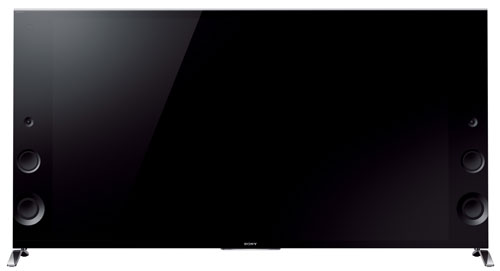
In for review today is the Japanese manufacturer’s new 2014 sub-flagship 4K UHD TV which carries almost identical model number to its predecessor, perhaps a sign that Sony intends to build upon the success of last year’s Bravia X9 series. The new X9 (help us out here Sony, should we call it X9B, X90B, X9005B, 2014 X9, or what?) is available in three screen sizes: the 55-inch KD-55X9005B (we’re reviewing this), the 65-inch KD-65X9005B, and the gigantic 79-inch KD-79X9005B. The outgoing corresponding 2013 models for the first two were KD-55X9005A and KD-65X9005A – this can get confusing for potential buyers very fast, especially if making their purchase on the internet.
In the flesh though, it’s much easier to identify which is which. While both last year’s and this year’s Sony X9 carry the company’s Magnetic Fluid speakers by the sides which extend their wingspan by a not inconsiderable margin, the Bravia KD55X9005B features a “Wedge” design where the bottom of the chassis is wider than the top. According to Sony, this unique styling not only lowers the panel’s centre of gravity thus allowing for a smaller footprint, but also provides more physical space for a better sound system.
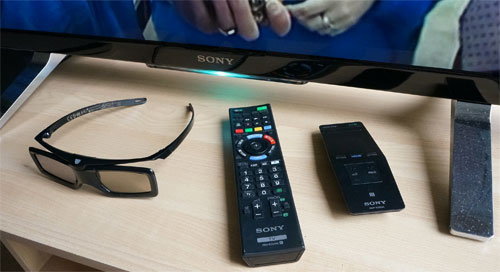
The TV is supported on a pair of small, reflective metal feet which can be fitted either to both ends of the screen, or further inwards for placement on a narrower AV rack that doesn’t span the entire width of the panel.
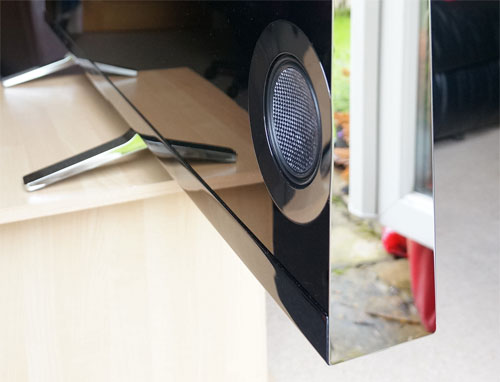
Although the Sony KD-55X9005B takes up significantly more space (both laterally and front-to-back) than your typical edge-lit LED LCD display, there are enough classy touches – the rounded top, the mirrored chrome finish on the sides, the inconspicuous camera embedded above the left tweeter, and of course the ungrilled front-firing speakers bookending the screen – to make this a truly attractive and distinctive set.
Sony has even thoughtfully included a port replicator (model number PTR-BR100) that extends the connection inputs away from the TV for owners who wish to wallmount. The Sony PTRBR100 is not as elegant and tidy as Samsung’s excellent One Connect box though for a couple of reasons: it draws its own power separately from the Bravia X90-B, and each connection that needs extending will require the individual cable hooked up to the television. There’s no extension provided for HDMI input 4, but it shouldn’t be a big deal given that HDMI ports 1 and 2 are the ones with HDCP 2.2 support.

The on-TV input ports are housed behind two removable flaps. The three USB inputs are version 2.0 rather than the speedier 3.0.
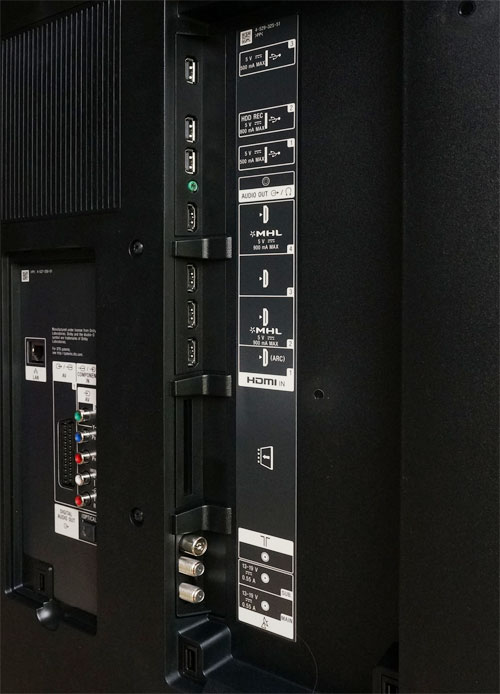 |
| 4x HDMI, 3x USB, component, RGB Scart, aerial & satellite sockets, LAN, audio outs |
Note: Our Sony KD55X9005BBU review unit was calibrated using CalMAN 5, the industry-leading video calibration software.
For the past few years, if you wanted to obtain the most accurate out-of-the-box picture on a Sony Bravia flat-screen TV, all you needed to do was switch its [Scene Select] top-level preset to “Cinema“. This is still true to a certain extent on the 55X9005B, though there’s been a slight change.
You see, within [Scene Select] “Cinema” lie two further [Picture Mode] sub-presets, namely “Cinema 1” and “Cinema 2“. On every other 2013 and 2014 Bravias we’ve tested, the default has always been “Cinema 1” which is more suitable for critical viewing in a dimly-lit environment (it has less superfluous processing turned on, and targets 2.4 gamma), but the Sony X9B defaulted to “Cinema 2” which is geared towards general/ daytime viewing. We swapped back to “Cinema 1” for calibration.
In [Cinema 1] mode, the default [Colour Temperature] of “Warm 2” yielded fairly accurate greyscale, with only a dip in blue channel at higher luminance causing delta errors (dEs) to creep over 3 (the commonly accepted threshold before inaccuracies become visible to the human eye).
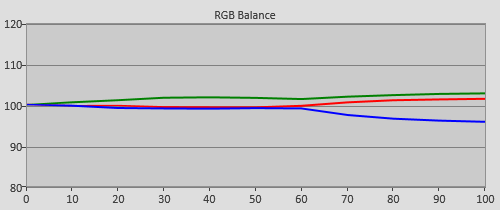 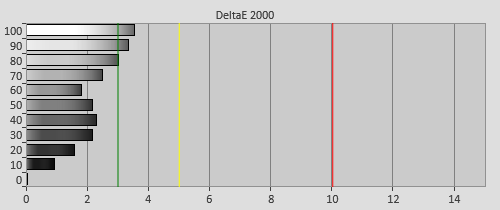 |
| Pre-calibration RGB tracking and delta errors (dEs) |
Like all Sony TVs, the KD55X9005B still comes with only a two-point [White Balance] system, even though other top-tier TV manufacturers typically offer 10-point or even 20-point white balance controls on their high-end models. However, when tracking is as linear as it usually is on Sony Bravias, 2p WB controls are sufficient to get greyscale aligned to D65.
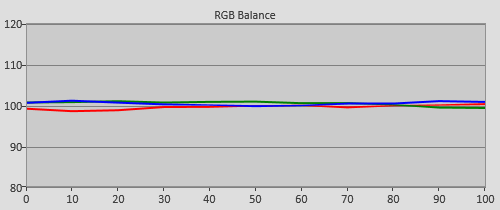 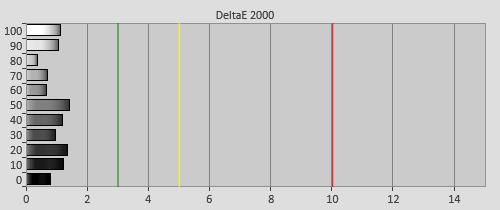 |
| Post-calibration RGB tracking and dEs in [Movie] mode |
And so it proved on the 55in Sony X90B. A few clicks in the [White Balance] submenu was all that’s needed to bring delta errors (dEs) under 2 throughout the entire luminance range, ensuring tint-free images be them dark or bright.
Sony is still the only TV maker at this time of writing to adopt 2.4 gamma in its most accurate picture preset, which deserves praise because no less an authority than the International Telecommunications Union (ITU) has recommended 2.4 as the electro-optical transfer function (EOTF) for flat-panel displays used for dark-room studio mastering.
![Pre-calibrated Gamma tracking in [Cinema 1] mode](https://www.hdtvtest.co.uk/news/wp-content/uploads/2018/04/uhdtv_Sony-KD55X9005B_pre-gamma.png) | ![Post-calibrated Gamma tracking in [Cinema 1] mode](https://www.hdtvtest.co.uk/news/wp-content/uploads/2018/04/uhdtv_Sony-KD55X9005B_post-gamma.png) |
| Pre-calibration gamma tracking (2.38) | Post-calibration gamma tracking (2.34) |
The default [Gamma] setting of “-2” in [Cinema 1] mode on the KD55X9005 resulted in gamma that tracked quite close to 2.4. Dropping [Gamma] down one click to “Min” caused overall gamma to overshoot 2.4 (settling at 2.45), so we left it at “-2“. If you look at the graph on the left above, you’ll notice a small bump at 80% and 90% video signal – this was brought about by [LED Dynamic Control] “Standard” which darkened certain bright scenes.
Sony doesn’t offer any advanced colour management system (CMS) on its 2014 Bravia X9, but that’s not a problem, because once we calibrated greyscale, the colour saturation tracking points we measured fell into place very nicely:
![Post-calibration Colour saturation tracking in [Cinema 1] mode](https://www.hdtvtest.co.uk/news/wp-content/uploads/2018/04/uhdtv_Sony-KD55X9005B_post-strack.jpg) |
| Post-calibration colour saturation tracking |
Delta errors (dEs) dropped below 3 for the 25%, 50%, 75% and 100% saturation tracking points across all six primary (red, green, blue) and secondary (cyan, magenta, yellow) chromaticities, which means that colours including flesh tones and foliage will look spot-on in real-world viewing.
![Post-calibration colour errors in [Cinema 1] mode](https://www.hdtvtest.co.uk/news/wp-content/uploads/2018/04/uhdtv_Sony-KD55X9005B_post-strack-de.png) |
| Post-calibration colour errors (<3 not appreciable to the eye) |
| Dead pixels | None |
| Screen uniformity | Very good for edge-lit LED LCD |
| Overscanning on HDMI | 0% if [Screen Format] “Full” & [Display Area] “Full Pixel” or “+1“ |
| Blacker than black | Passed |
| Calibrated black level (black screen) | LEDs dim down/ shut off |
| Calibrated black level (ANSI checkerboard) | 0.056 cd/m2 with [LED Dynamic Control] “Low“ |
| Black level retention | Auto-dimming with full black screen |
| Primary chromaticity | Good |
| Scaling | Very good |
| Video mode deinterlacing | Decent |
| Film mode deinterlacing | Passed 3:2 cadence over 480i |
| Viewing angle | Good for a VA LCD panel |
| Motion resolution | High motion sharpness with [MotionFlow] “Impulse“ |
| Digital noise reduction | Very light layer of undefeatable noise reduction that most viewers won’t notice |
| Sharpness | Defeatable edge enhancement |
| Luma/Chroma bandwidth (2D Blu-ray) | Full luma; chroma horizontally blurred except in [Game] & [Graphics] mode |
| 1080p/24 capability | No judder in 2D and 3D |
| Input lag (high-speed camera) | 32ms compared to lag-free CRT in [Game] mode |
| Leo Bodnar input lag tester | 41ms in [Game] mode; 128ms otherwise |
| Full 4:4:4 reproduction (PC) | Yes, in [Game] and [Graphics] modes at 1920×1080 |
| Default [Standard] mode | 72 watts* |
| Calibrated [Cinema 1] mode | 99 watts |
| Standby | <1 watt |
*Note: [Light Sensor] was enabled out of the box, which explains why energy usage was lower prior to calibration than after.
Probably because of a different type of VA LCD panel used, the Sony KD55X9005B’s native black level was slightly brighter than that measured on last year’s 55″ X9. With peak white pegged at our usual target of 120 cd/m2 after calibration, our Klein K10-A meter returned a figure of 0.079 cd/m2 from both a full-field video black signal (with auto-dimming defeated by displaying our Blu-ray player’s pause icon on screen) and 4×4 ANSI chequerboard pattern.
To help matters, the X9005B does come with Sony’s pseudo-local dimming technology which in our opinion is the most well-implemented among all the TV brands we’ve encountered over the years. It’s engageable via the [LED Dynamic Control] option within the picture menu, and is available in two strengths, namely “Low” and “Standard“. Both lowered ANSI black level to around 0.056 cd/m2, although being the more aggressive setting, the latter naturally looked darker on a full black screen (0.003 cd/m2 vs 0.022 cd/m2).
Between [LED Dynamic Control] “Low” and “Standard“, we preferred the former: the latter skewed high-end gamma, and introduced some backlight fluctuation however mild in our flavour-of-the-month low-APL movie scenes (Batman’s tunnel rendezvous with Catwoman in The Dark Knight Rises; Uma Thurman buried alive in Kill Bill Vol. 2). Either was better than “Off“, due to improved contrast performance.
Our Sony KD-55X9005B review sample exhibited very good backlight uniformity – we saw no obvious clouding or corner bleed in a dark room after calibration. Being an edge LED TV though, some dirty screen effect (DSE) was inevitable, since a limited number of LED lamps along the borders need to illuminate the entire screen. DSE was most prominent in 3D (where light output was maxed to counter the darkening effects of the active-shutter glasses) during panning shots across a uniform background, such as the night sky in Tangled. Otherwise, we didn’t notice any significant DSE or banding in real-life material including football.
Samsung has made great strides with its backlight scanning/ black frame insertion (BFI) implementation this year to boost motion clarity on its LED LCDs, even threatening to overtake Sony whose “Impulse” mode tended to be too dim and produce too much flicker.
The Bravia 55X9005B went some way towards redressing the balance. With [Motionflow] set to “Impulse“, the X90B managed to hit 120 cd/m2 peak luminance (albeit with [Backlight] and [Contrast] nearly maxed out), and did not exhibit excessive flicker in photorealistic content except in very bright scenes, although we noticed some double ghost images on very fast pans. We were quite happy to use it for day-to-day and even critical viewing.
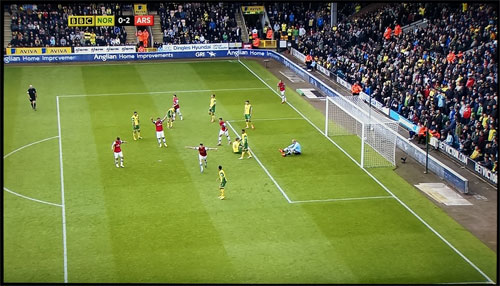
If the “Impulse“-enabled picture is still too dark (for example when watching in a very bright room) or flickery for you (some people are more sensitive), then [Motionflow] “Clear” – which is mainly frame interpolation with a small dose of BFI – is a good alternative to reduce motion blur. From our tests, Sony televisions generally introduce less interpolation artefacts and quirky motion processing errors than Samsung models.
For those of you who are into hard numbers, the motion resolution (as determined through the horizontally scrolling lines pattern in Chapter 31 of the FPD Software Benchmark test disc) for [Motionflow] “Standard“, “Smooth“, “Clear“, “Clear Plus” and “Impulse” were 550, 550, 900, 950 and 1080 respectively. [Motionflow] “True Cinema” is reverse 2:3 pulldown to recover 24p frames from 60hz source, and doesn’t increase motion resolution.
With deep blacks by LED LCD standards, accurate colours and linear circa-2.4 gamma, we knew the picture on the Sony KD-55X9005B was going to look good, but we never expected it to be THIS spectacular. It truly was a case of the whole being greater than the sum of its parts: even off-air HD broadcasts – for example the Eurovision 2014 Song Contest on BBC1 HD – looked superb with sharp detail and above all a terrific dynamic range that injected so much depth and dimensionality to the on-screen image.
From the internal Freeview HD tuner, we saw the occasional macroblocking in the Eurovision’s many frenzied moments, as well as mild mosquito noise around the moving players in Match of The Day on BBC One HD, but these were down to the compression used at source, rather than the fault of the TV. The latter can be eradicated by engaging [MPEG Noise Reduction] even at the “Low” setting, although we decided to leave it off since we observed a tiny loss of detail globally, and the mosquito noise wasn’t all that bothersome.

We spun a few Blu-ray discs, and the phenomenal images put out by the Bravia X9005B so wowed us that it got us asking “what devilry is this?”. The fantastic contrast between inky blacks and bright whites – even when they co-existed on the same scene – simply belied the measured ANSI black level of 0.056 cd/m2. Was it Sony’s new X-tended Dynamic Range technology which operated at a more microscopic level beyond what even our reference-grade instruments could measure? Was it the way LCDs can deliver linear light output that’s unhindered by ABL (Automatic Brightness Limiter) unlike plasma and OLED TVs? We honestly don’t know. All we know is the Sony X9-B produced a truly fabulous, high-contrast image that appealed greatly to our videophilic eyes.
Sony is still using the Triluminos Display moniker for the wide colour gamut (WCG) technology on the KD55X9005B, even though this year the company is no longer using QD Vision’s quantum dot technology. It’s no loss though (we weren’t particularly big fans of last year’s quantum-dot-based Triluminos tech for accurate colour reproduction anyway) – the X90-B still rendered all the tonal subtleties of every shade and hue with stunning precision and, with [Smooth Gradation] engaged, posterization-free finesse. Particularly striking was just how rich and well-saturated the colours appeared without transgressing into gaudy or overblown territory.
Combined with the lack of visible pixel grid structure granted by the 3840×2160 screen resolution, this made for a picture that’s covered in a sheen of sparkling silkiness. Like what we found on last year’s Sony X9005A using a high-frequency pixel-phase test pattern, you should enable the [Mastered in 4K] option in the X9005B’s [Reality Creation] submenu wherever possible for HD sources – even regular, non-Mastered in 4K Blu-rays – to allow every last drop of detail to come through the screen unscathed.
Watching House of Cards in Ultra HD 4K on Netflix did not immediately give us the same wow we experienced on the Samsung UHD TVs, but that’s no slight on the Sony 55X9005B: it’s no longer the first time we laid eyes on publicly accessible native 4K content; and the TV’s high-definition handling was so good that 4K didn’t represent as big a jump in quality. Colour and detail looked pristine especially in bright sequences – in particular, we liked how the X9B’s flat-tracking gamma let shadows fall naturally on the characters’ faces without overexposure or obscuring shadow detail, true to director’s intent.
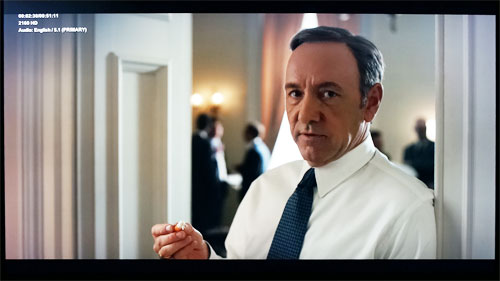
Using the DVDO’s handy AVLab 4K test pattern generator, we verified that all four HDMI ports on the Bravia KD-55X9005B were capable of receiving and displaying 3840×2160 resolution at 50Hz and 60Hz frame rates (up to 8-bit, 4:2:0, the maximum supported by the DVDO signal generator), though from time to time we would run into HDMI handshake issue causing screen blanking and an “unsupported signal” error message.
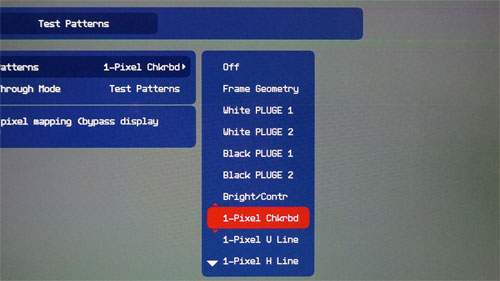 |
| Chroma line bleed extending to the right of DVDO TPG menu |
The X90B manifested faint chroma line bleed on 3840×2160 single-pixel chequerboard pattern at 4:2:2 and 4:4:4 resolution, which disappeared when we switched to 4:2:0 signal, suggesting that the underlying HDMI 2.0 chip was not full bandwidth. Just to be clear, we only saw this in test pattern, never in real-world content, although it’s not beyond the realm of possibility for this issue to crop up in the future when native 4K material with higher chroma resolution becomes more widely available.
One major difference between this year’s and last year’s Sony X9 series is the 3D display technology deployed: the new 2014 X9B uses active-shutter 3D tech; whereas its predecessor was passive 3D. We put up our custom-authored 3D resolution test card on the KD55X9005B, and were relieved to see the TV resolve full HD 3D resolution (last year’s KD-55X9005A didn’t, even when in theory it should). However, there existed some vertical high-frequency rolloff (i.e. the alternating black and white horizontal single-pixel lines were indistinct rather than crisply delineated), causing the Sony’s 3-D images to be edged out by those seen on Samsung’s HU7500 and HU8500 UHD TVs in terms of outright detail and sharpness.
Even so, we’d much prefer to watch extra-dimensional material on the Sony KD-55X9005B compared to the Samsungs for two reasons. First, there’s remarkably little crosstalk, which is pleasantly surprising given Sony’s troubled past with this issue on its first- and second-generation 3D televisions. Second, no judder was present in all types of tri-dimensional content we threw at the Bravia X90B, be it 1080p/24 (3D Blu-ray movies) or 50Hz (Sky 3D), as long as [Motionflow] was changed to “Off” – the default setting of “Standard” forces 60Hz output, leading to judder city with 24fps and 50fps sources.
We sampled Pacific Rim in the third dimension on the Sony X9B, and right from the word go its colourful and suitably bright presentation put a huge grin on our face. The 3-D quality was so good, in fact, that it compelled us to go back and calibrate the TV’s 3D mode (these days we normally skip this due to how uninterested the public is in this format). If you’re not averse to active 3D (headache, eye fatigue, etc.), then the Bravia 55X9B should give you plenty of wonderfully immersive 3-dimensional viewing.
Sony has been breaking all sorts of input lag records with its Bravia HDTVs since last year, but presumably because of the processing grunt required to upscale high-definition (or even lower resolution) games to be displayed on a 4K screen, its Ultra HD TVs aren’t quite as super-responsive.

With [Scene Select] set to “Game” on the KD55X9005B, our Leo Bodnar tester reported a lag time of 41ms, which nevertheless is among the lowest you can get on a UHD television. Before you turn your nose up, please remember that this used to be considered an excellent result for gaming responsiveness before the arrival of those crazy-fast Bravias.
Because [Game] mode works by keeping picture processing to a minimum, we did notice more instances of posterization, but we wouldn’t swap for another preset (certainly not [Cinema] mode which had a lag of 128ms!), as we believe a low input lag is of the utmost importance for an enjoyable gaming experience. For PC gamers, [Game] mode also provides 4:4:4 chroma reproduction though not at 4K@60Hz.
The Sony KD-55X9005B is a seriously talented performer which handles every type of mainstream content you throw at it with aplomb, be it Blu-ray movies, live sports broadcast or video games. In terms of LCD-making pedigree, brand image and marketing power, the closest competitor to Sony is none other than Samsung, but this year, the Bravia X90B betters the South Korean manufacturer’s corresponding 4K models – curved or flat – in almost every picture quality aspect that’s important to potential buyers.
For gaming, the KD55X9005B’s input lag is lower than Samsung’s HU7500 and HU8500, resulting in superior responsiveness. For watching sports such as football or tennis, the Sony is less prone to aberrant motion processing. For watching Blu-ray movies, the Bravia X9-B just provides that extra whiff of magical, cinematic quality for some reason – we could hit all the calibration spots on the Samsungs, yet the picture could still look a bit sterile and clinical. And as hard as it is to believe, Sony has actually improved the class-leading sound quality from the Magnetic Fluid speakers.
We’re of course over the moon that such a high-quality LED LCD television is available to video enthusiasts just when plasma is bowing out and OLED is still struggling. At the same time, we’re disappointed (even more so after reviewing the X9005B) that the 65-inch version of the range-topping Sony X95 series – which promises even better image quality due to the presence of full-array LED local dimming – is not coming to the UK and Europe. Regardless, Sony’s decision has no bearing on the Bravia 55X9005B being one of the best 4K TV we’ve tested thus far – it deserves to go straight to the top of your shortlist if you have the space to accommodate the set.
Note: If you’re interested in buying this television, please support us by considering making your purchase from our advertising partner Crampton and Moore who will provide competitive prices and first-rate customer service. At the very least, please go ahead and like their Facebook page or follow them on Twitter for special offers.
